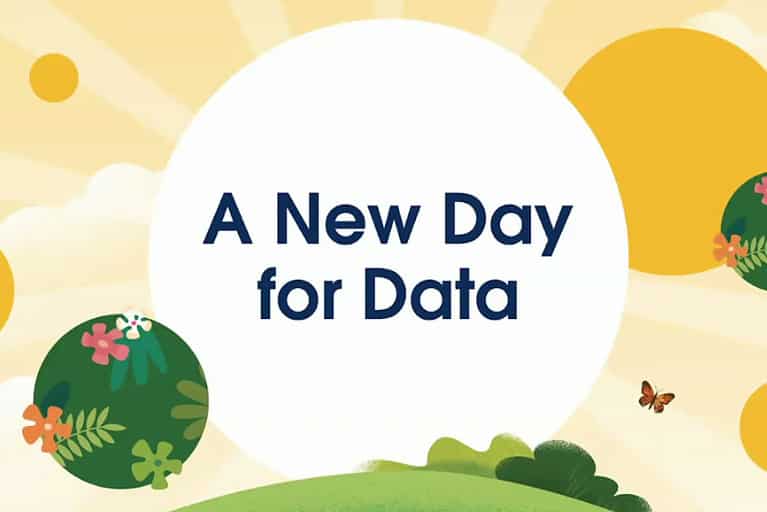Today Tableau announced that it is adding generative AI to its own BI platform. Tableau GPT should bring data to life and make BI tools more useful. Not as hip perhaps, but quite important, is the announcement that Tableau is making the VizQL Data Service available. Together, these developments should make Tableau’s capabilities more widely available.
One of the biggest challenges for BI platforms is to present the underlying data in a way that is relevant and understandable to as many employees as possible. This is where BI tools still fall short, we hear from Francois Ajenstat, Tableau’s CPO, during a briefing we attended on the company’s announcements today at its own Tableau Conference. So in doing so, he also implicitly indicates that Tableau itself was struggling with this. With the announcement of Tableau GPT and the first product using it, Tableau Pulse, this should change.
Tableau GPT
That Tableau would come out with something so now called Tableau GPT cannot possibly be called a surprise. First, because parent company Salesforce with Einstein GPT and sister company Slack with Slack GPT have already introduced something similar. Secondly, and more importantly as far as we are concerned, because the data that typically pass through a platform like Tableau’s are eminently suitable for “enrichment” using generative AI. That is, many more useful insights can be extracted from this data than already exist today. This should ultimately ensure that the data that is available becomes relevant to more and more people. Ultimately, organizations can then benefit from that.
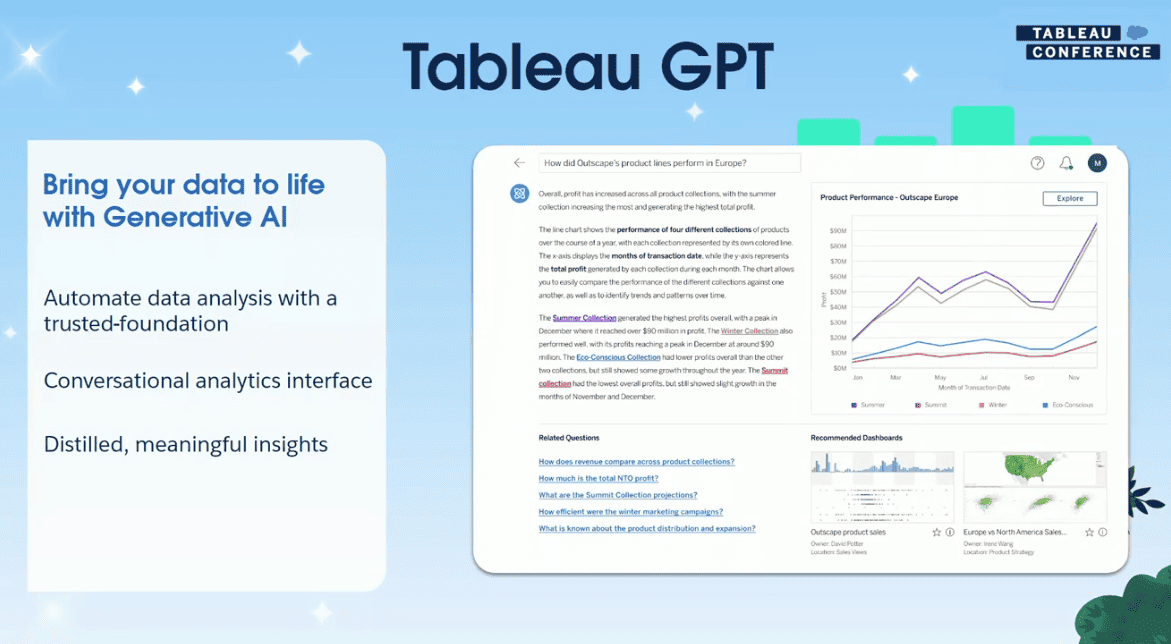
One of the things Tableau GPT can do is make BI less “dry”. By this we mean that it can present insights and the like in coherent text. That saves translation and makes the whole thing a lot more understandable for people who don’t look at BI dashboards all day. Of course, you can also ask questions of your data and get answers to them that, if all goes well, provide useful insights right away.
Tableau Pulse
One of the first places Tableau users can use Tableau GPT is in the new Tableau Pulse. The slide we were shown during the briefing (also below) says “Powered by Einstein GPT,” so we suspect Tableau GPT is a derivative of what Salesforce has already developed before. That also only makes sense, of course, because why reinvent the wheel? During the briefing, Pedro Arellano, GM & Head of Product at Tableau, admits this to a certain extent. Tableau GPT uses a combination of models from Salesforce, third parties and what they have developed within Tableau’s own environment.
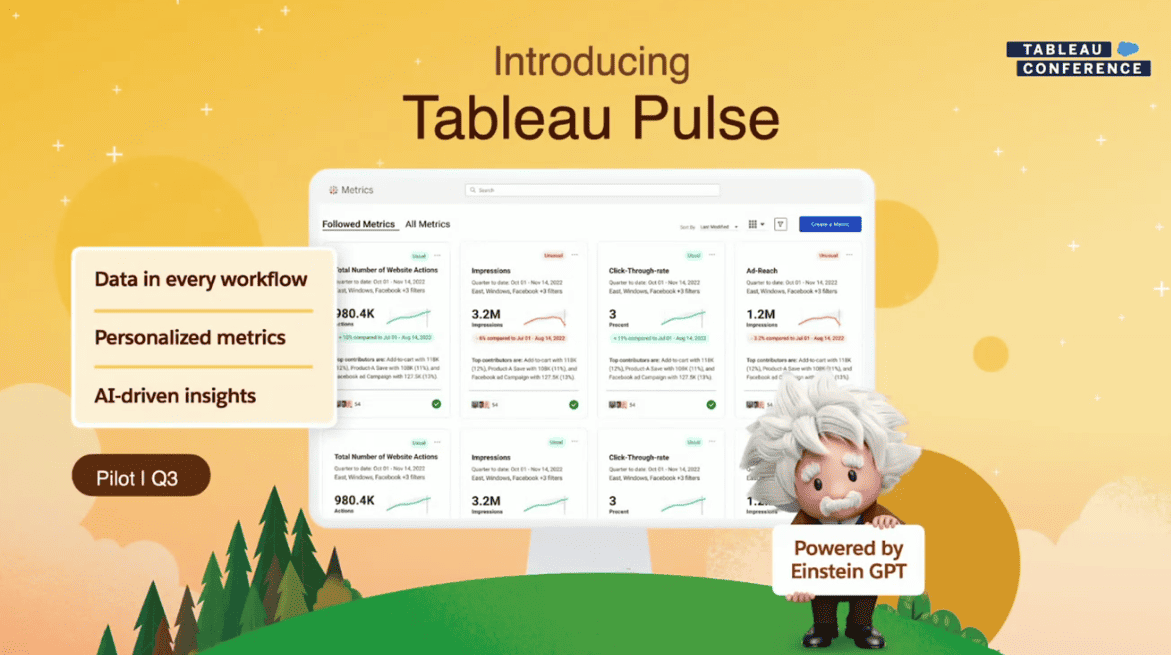
With Tableau Pulse, according to Arellano, you have a “personal guide to your data.” This guide knows your data, also knows what your goals are and helps you achieve them, he points out. It works fundamentally differently from how Tableau worked before. Arellano talks about how Tableau has actually reimagined the experience of the platform.
To demonstrate this, we also saw a brief demo of Tableau Pulse. Of course, the name Pulse was chosen for a reason. It gives you the pulse of your data, so to speak, and summarizes what’s going on in a short statement. In the screen below, you can see that at the top:
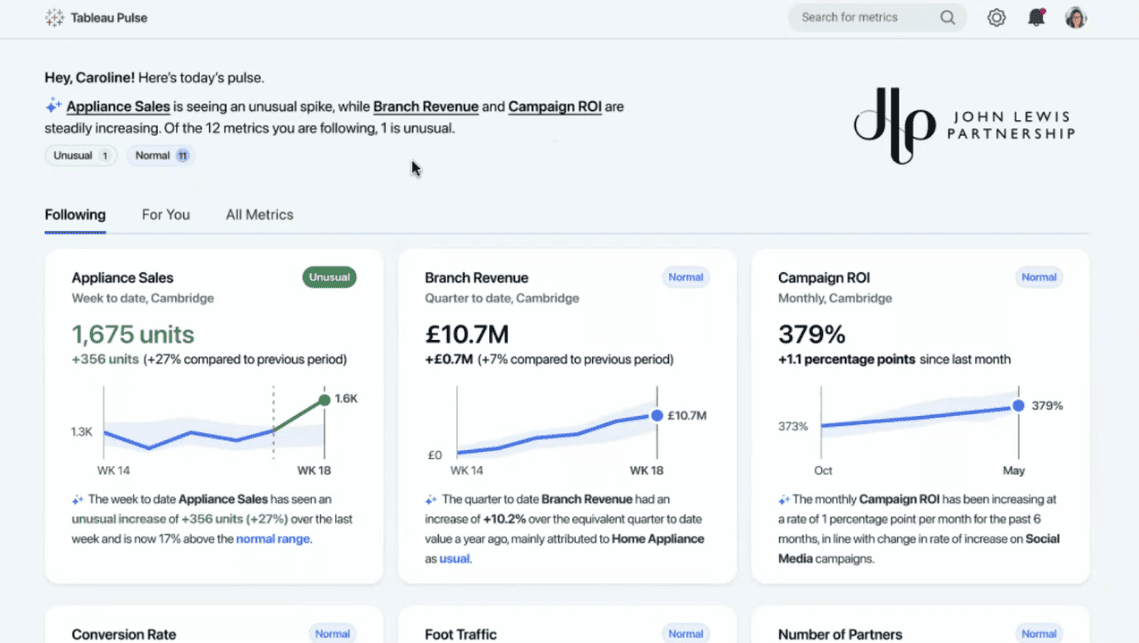
You can then dive deeper into specific sections and ask questions of them, as you can see below:
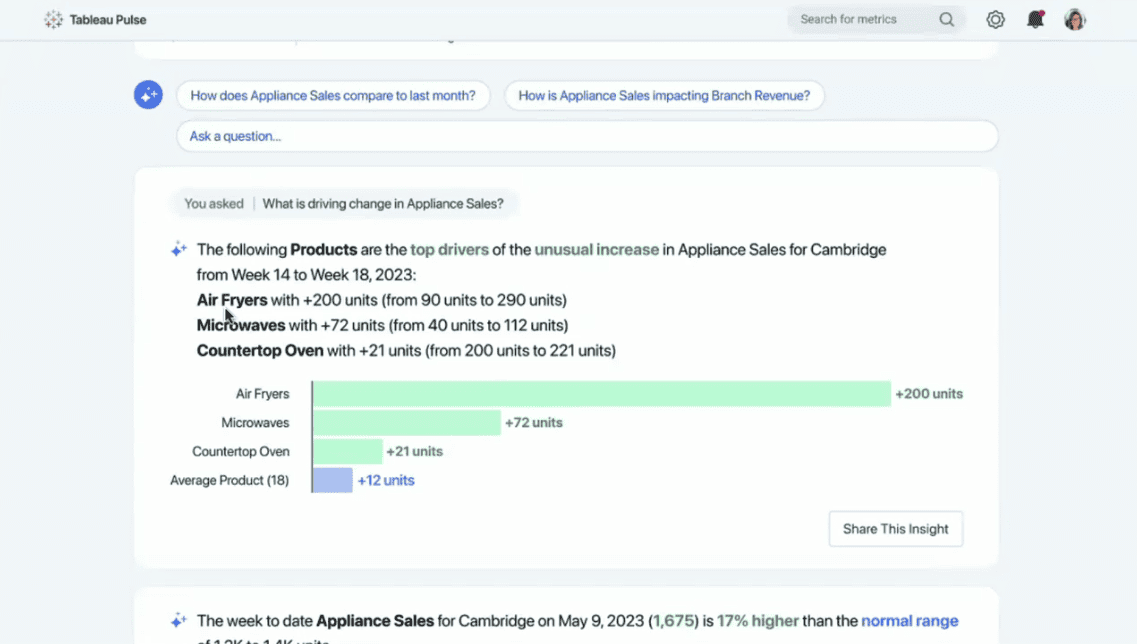
The idea is that this allows you to ask the data anything you want to know. Eventually, based on this kind of data, you’ll also get to see if it has an impact on other parts of your organization. You might get an alert that inventory in a specific branch is dropping sharply, as you can see below:
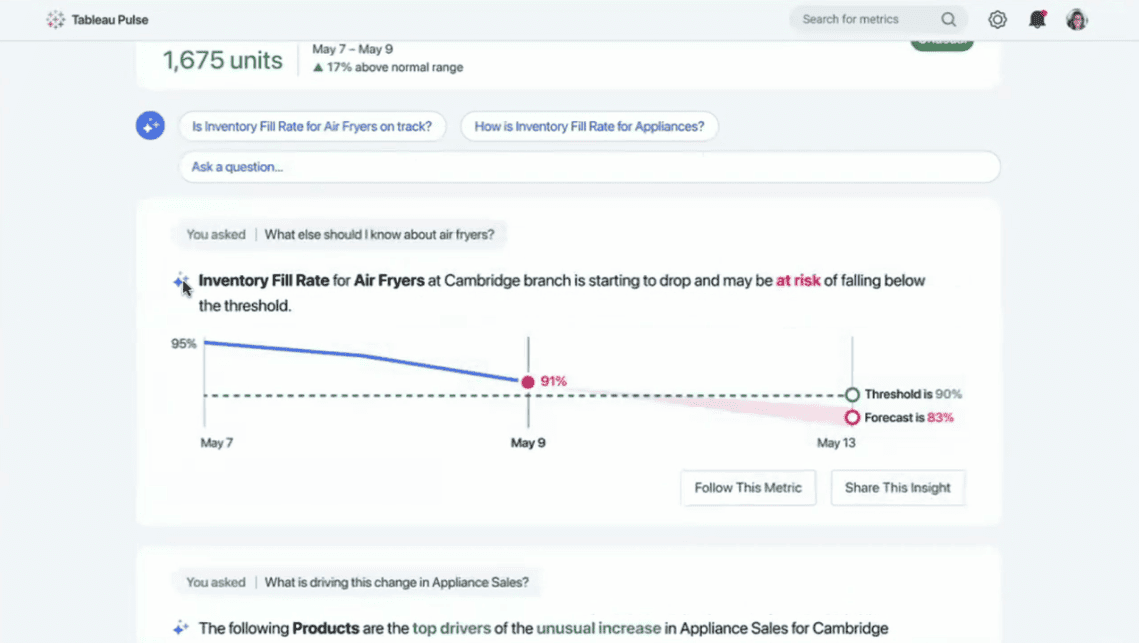
Data Cloud and VizQL Data Service
In addition to Tableau GPT and Tableau Pulse, however, there are two other pretty important announcements at Tableau Conference 2023. These may not get the headlines because of Tableau GPT and Tableau Pulse, but are quite important as well. So we don’t want to keep these announcements from you.
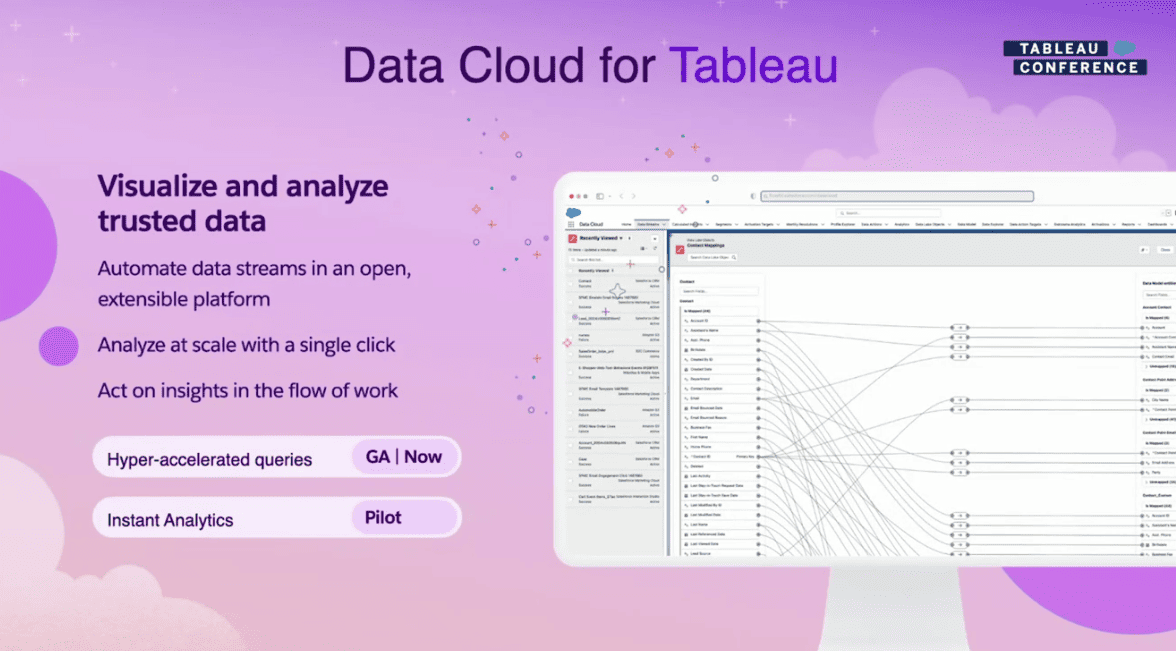
First, there is Data Coud for Tableau. This allows you to bring together data from all kinds of sources and analyze them within Tableau. The emphasis here is logically on Customer 360 sources from Salesforce. Fortunately, at Tableau and Salesforce they also understand that not all data resides in Salesforce environments (though no doubt they would like it to). So you can also connect external sources, for example Snowflake, to it without having to move the data. Tableau is layered on top of all these sources, so to speak. It has a strong data fabric vibe to it.
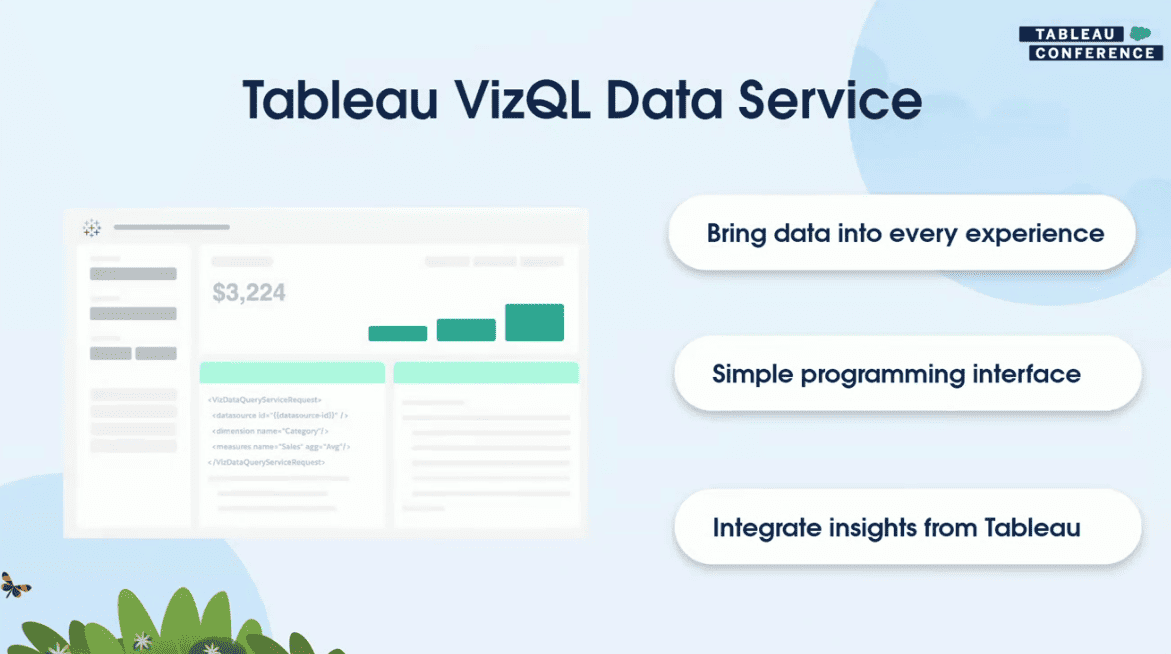
Finally, there is the VizQL Data Service. With this, Tableau decouples the front-end from the back-end, so to speak. Developers can then use something you might call headless Tableau. The VizQL engine is the core of Tableau. Developers can now connect that to other front-ends as well. In this way, you can use Tableau in more places than was previously the case.
